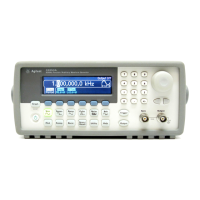294
7
Tutorial
In order to achieve the best performance from the Agilent 33250A, it may
be helpful for you to gain a better understanding of the internal operations
of the instrument. This chapter describes basic signal-generation
concepts and gives specific details on the internal operations of the
function generator.
• Direct Digital Synthesis, on page 295
• Creating Arbitrary Waveforms, on page 298
• Square Waveform Generation, on page 300
• Pulse Waveform Generation, on page 300
• Signal Imperfections, on page 302
• Output Amplitude Control, on page 304
• Ground Loops, on page 305
• Attributes of AC Signals, on page 307
• Modulation, on page 309
• Frequency Sweep, on page 312
•Burst, on page 315
You can use an arbitrary waveform generator in a variety of applications
where it might be otherwise difficult or impossible to generate complex
output waveforms. With an arbitrary waveform generator, signal
imperfections such as rise time, ringing, glitches, noise, and random
timing variations can be easily simulated in a controlled manner.
Physics, chemistry, biomedicine, electronics, mechanics, and other fields
can benefit from the versatility of an arbitrary waveform generator.
Wherever things vibrate, pump, pulse, bubble, burst, or change with
time in any way, there are possible applications – limited only by your
ability to specify the waveform data.

